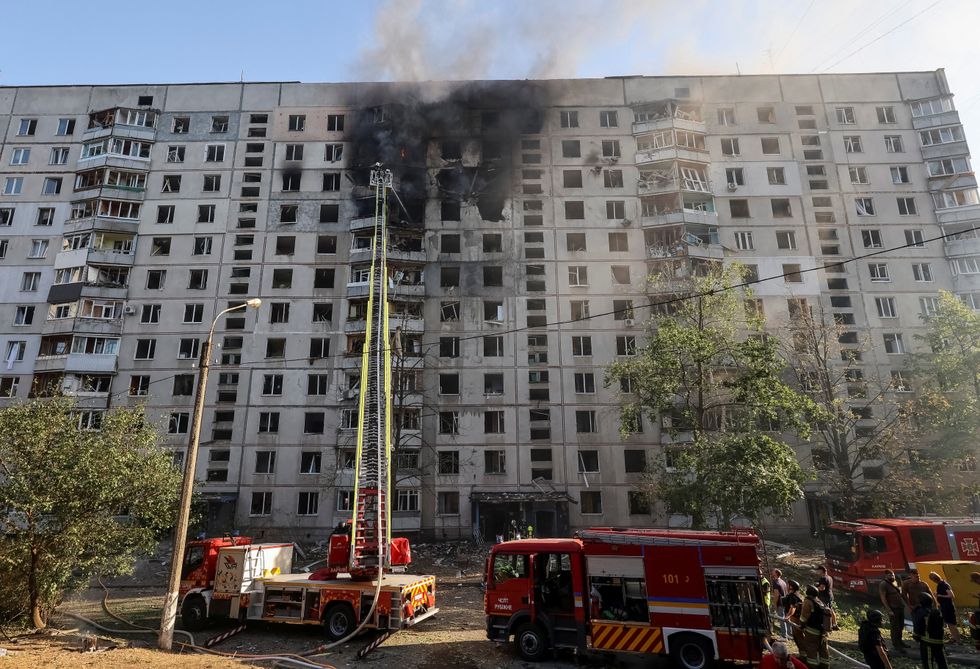Russia could concede $300 billion in frozen assets as part of Ukraine war settlement, sources say
Moscow weighs using frozen sovereign assets for Ukraine’s rebuilding but wants occupied areas to benefit too

Russia could agree to use $300 billion of its sovereign assets frozen in Europe to help rebuild Ukraine but would insist that part of the money be allocated to the regions under Moscow’s control, three sources familiar with the matter told Reuters.
The proposal is part of early discussions between Russia and the United States aimed at ending the war, which began in 2022 when Russian troops invaded Ukraine.
The two countries held their first face-to-face talks on Feb. 18 in Saudi Arabia, and both U.S. President Donald Trump and Russian President Vladimir Putin have signaled their willingness to meet soon.
Frozen assets and reconstruction talks
Following the invasion, Western nations blocked an estimated $300–$350 billion in Russian sovereign assets, primarily held in European, U.S., and British government bonds.

While the discussions are in the preliminary stages, Moscow is exploring the possibility of using a significant portion of these reserves for Ukraine’s reconstruction as part of a potential peace deal, according to the sources.
Eastern Ukraine has suffered widespread destruction, with the World Bank estimating last year that rebuilding and recovery could cost $486 billion.
The war has left hundreds of thousands of soldiers dead or wounded on both sides and forced millions of Ukrainians to flee.
The Kremlin declined to comment on the matter, and it remains unclear whether the proposal was formally discussed in the recent U.S.-Russia meeting in Saudi Arabia.
Moscow’s terms for using frozen assets
One source said Russia could accept up to two-thirds of the reserves being used for Ukraine’s reconstruction under a peace agreement, provided there were accountability measures.
However, the remaining portion would have to go to rebuilding Russian-held territories, which Moscow now considers part of Russia.
Another source said Russia would agree to use the funds for Ukraine but noted it was too early to determine how they would be divided. Two sources also stressed the importance of deciding which companies would be awarded contracts for reconstruction.
A Kremlin-connected source not directly involved in the talks said Moscow would still push for the lifting of sanctions as part of any deal.
Divisions among western allies
The Group of Seven (G7) has previously stated that Russian sovereign assets will remain frozen until Moscow compensates Ukraine for war damages.

However, Trump has expressed interest in bringing Russia back into the G7, a group of the world’s largest economies.
There are divisions among Western officials on whether to seize Russia’s assets outright. Some, particularly in Germany and the European Central Bank, have warned that such a move could trigger legal challenges and damage the euro’s standing as a reserve currency.
Russian officials have argued that seizing the funds would violate free-market principles, undermine banking security, and erode trust in global reserve currencies.
In response, Moscow has drafted legislation allowing it to seize funds from companies and investors in countries that have imposed sanctions, though the bill has not yet passed in Russia’s lower house of parliament.
European control over frozen assets
At the time of the asset freeze, Russia’s central bank reported holdings of about $207 billion in euro assets, $67 billion in U.S. dollar assets, and $37 billion in British pound assets.
Additional reserves included Japanese yen, Canadian and Australian dollars, Swiss francs, and Singapore dollars.
A significant portion—around €159 billion—was held by the Belgian clearinghouse Euroclear Bank as of early last year. Russia’s gold reserves, estimated at $627 billion including the frozen funds, are stored domestically.
While the freezing of assets has angered Moscow, some Russian hardliners have previously acknowledged that the country may eventually have to part with them—provided it secures control over occupied territories.
"I propose a solution. They pay this money towards our purchase of those territories, those lands that want to be with us," Margarita Simonyan, head of Russian state broadcaster RT, said in 2023.
The Russian-occupied territories currently contribute about 1% of Russia’s GDP, but economists say that share could grow significantly if they remain under Moscow’s control. The regions already account for roughly 5% of Russia’s grain harvest.
The fate of the frozen assets remains a contentious issue, with Western allies divided on how to proceed and Russia positioning itself for potential negotiations.
Popular
Spotlight
More from World
How AI is aiding Trump's immigration crackdown
Digital rights advocates warn AI hallucinations make it risky for precision tasks like immigration enforcement













Comments
See what people are discussing